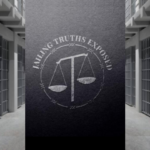What Happens When The Media Wrongly Accuses an Innocent Person?

Most of us know that we can’t always believe what we read in the newspapers, but what happens when reckless reporting harms an innocent person’s reputation?
Fairfax Media, the publisher of the Sydney Morning Herald, recently found out how costly the publishing of inaccurate information can be after being successfully sued for defamation over the reporting of sexual misconduct allegations against a school teacher.
The reporting of inaccurate information
In January 2014, Fairfax Media published an article which said a teacher at a private school on Sydney’s lower north shore had resigned amid allegations of sexual misconduct with a number of students. The article described the teacher as being in her 20s and teaching English and drama.
This information was incorrect and led to the wrong teacher being unfairly stigmatised.
At the school at that time there was only one teacher who fit the description published by Fairfax. The teacher who had actually resigned over the incident did not fit the description given in the article.
The misidentified teacher successfully sued on the grounds that her reputation had been significantly damaged as a result of the incident. Although Fairfax had attempted to settle with the teacher for $50,000 plus legal expenses when the mistake came to light, this was not held to be something which worked in the newspaper company’s favour. NSW Supreme Court Justice Lucy McCallum agreed that the teacher had been reasonable in refusing the original offer and pursuing the matter further. Justice McCallum found the teacher had been “grossly defamed”.
As well as being awarded $350,000 in damages plus interest from Fairfax, the teacher also received compensation from News Corporation over articles published in the Daily Telegraph and on the News website.
What is the Defamation Act?
The defamation laws used to vary significantly between states, but in January 2006 they were unified under Defamation Acts published in each state. This means that the law is now consistent across Australia when it comes to defamation.
Defamation is defined by law as the publication of false information about a person that is likely to injure their reputation or cause them to be ridiculed or shunned. Defamation is a fairly broad concept and can be applied to a number of different types of situations, including social media defamation, and the publication of information and images.
What is required to successfully prove defamation?
For a person to successfully prove that defamation has taken place, they need to be able to show that the statement or information published had the potential to lead to harm to their reputation, business, or the way they would be treated by people. This harm would have to be something that would be understood by ordinary members of society.
The complainant would also have to show that they were the person identified. This doesn’t necessarily mean they have to have been named. As with the teacher who sued Fairfax Media, if enough details are given that they can be identified and that a reasonable person would presume that the statement or information related to them, this could be enough to prove defamation.
The third factor that needs to be proven is that the information was published and made available to one or more third parties. Defamation can’t apply to situations where one person writes something false and derogatory about another person and just sends it to them. For it to be classed as defamation from a legal perspective, at least one other person needs to have seen it.
Is defamation a civil or criminal matter?
Most of the time, defamation is treated as a civil matter and is pursued under civil law, especially in the case of media companies who although they may have published something carelessly, often didn’t have any particularly criminal intention behind it. The penalties for a civil defamation case usually involve compensation for the complainant and in some cases a requirement to publish a statement rescinding the previous statements and providing an accurate version.
Defamation can, however, be treated as a criminal matter in certain limited situations. This is more likely to apply in cases where actual threats are contained in the defamatory statements, and those threats cause a person to fear for their safety. A person may also apply for an apprehended violence order (an ‘AVO’) in such cases to protect themselves against the person who is making the statements.
If you believe that you are the victim of defamation by the media, you are best off contacting the Law Society of NSW for a list of civil lawyers that specialise in that field.
Or, if you are in fear for your safety due to criminal threats, you can report the matter to police.
Conversely, if you have been charged with making threats or intimidating someone else, your best course of action is to contact an experienced criminal defence lawyer who can assess your case and advise you of your options.






